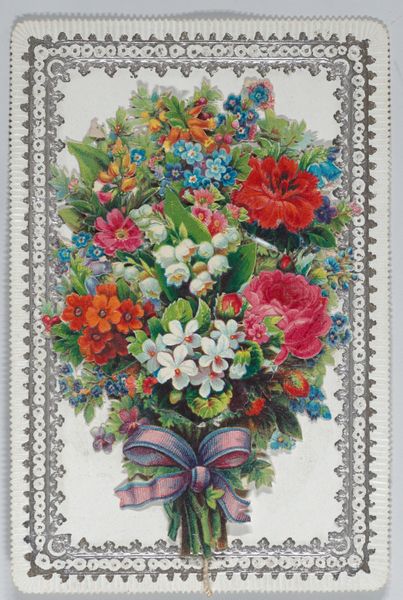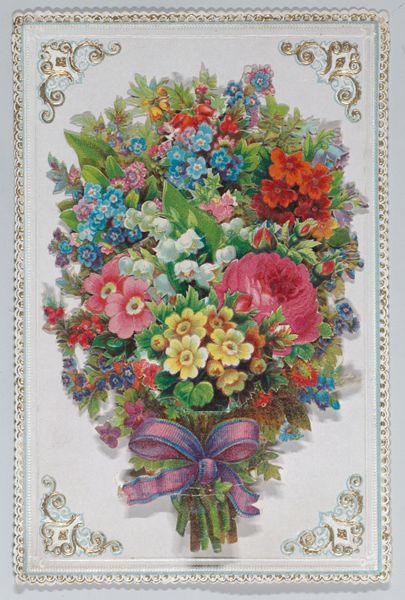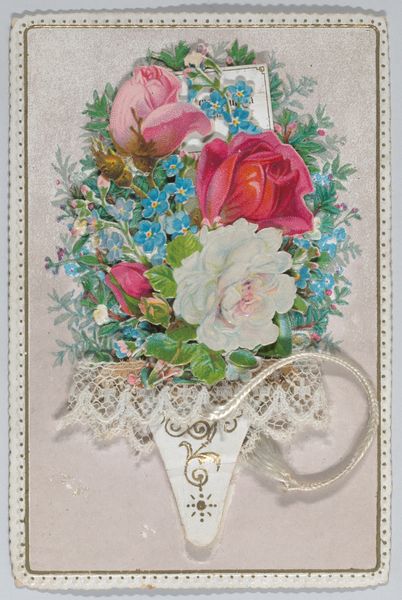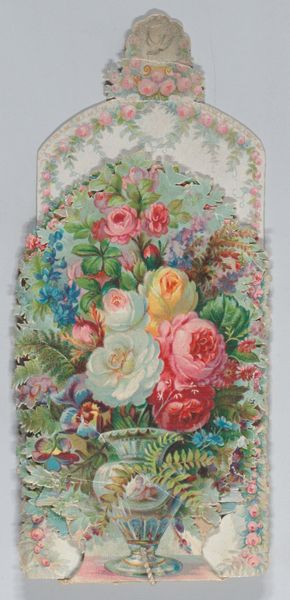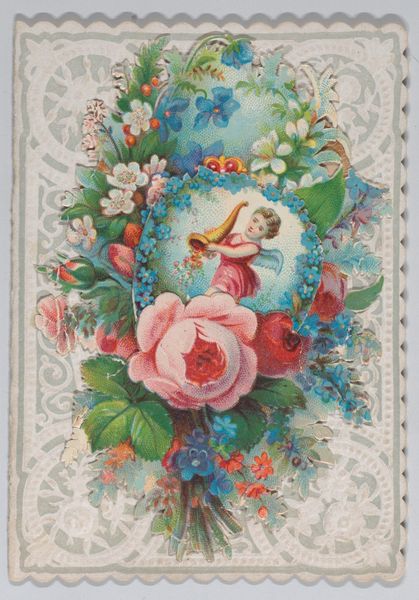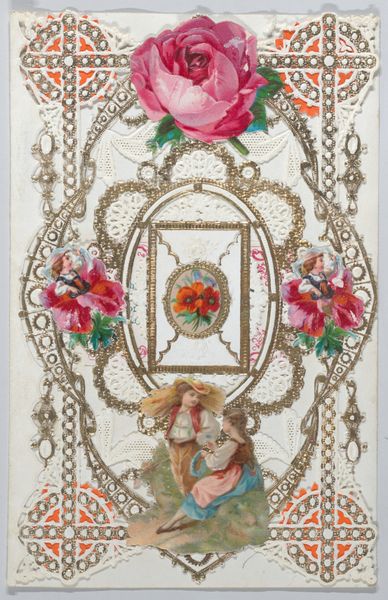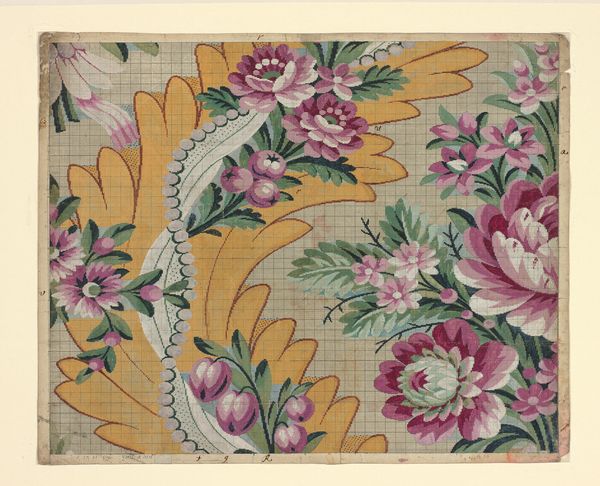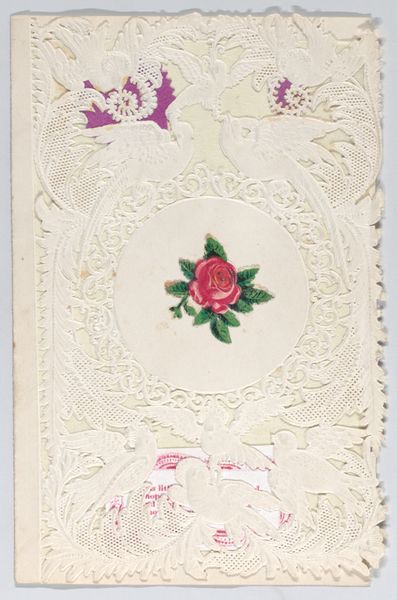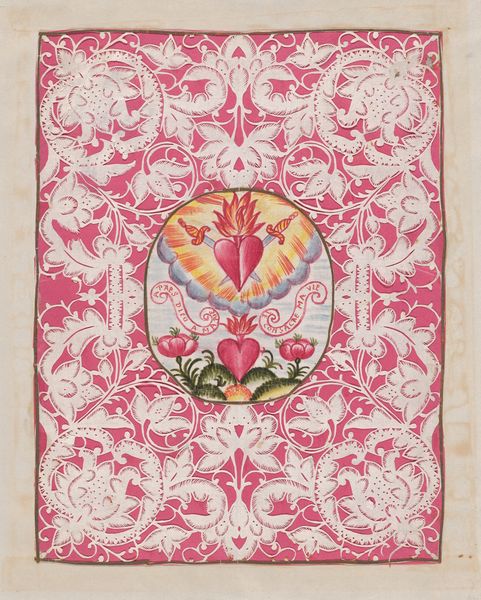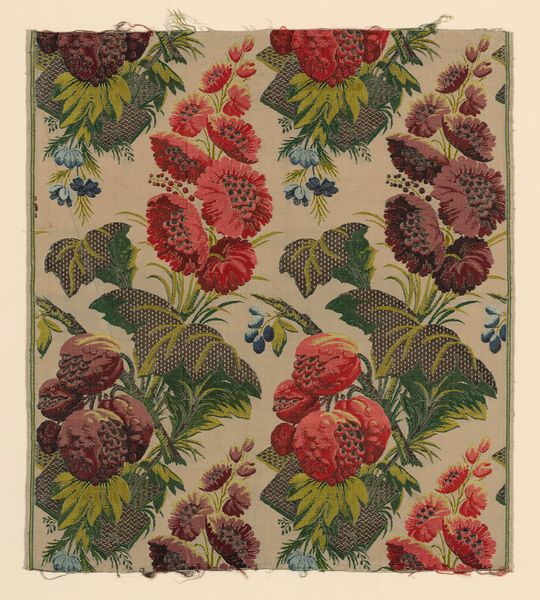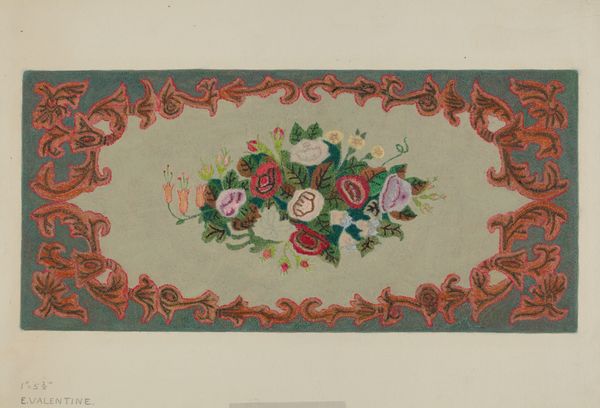
Valentine - Mechanical Layered Birthday - die cut roses and woman. 1870 - 1880
0:00
0:00
Dimensions: Width: 3 in. (7.6 cm) Length: 4 5/8 in. (11.7 cm)
Copyright: Public Domain
Curator: What a delicately constructed little thing. It's an anonymous Valentine, dating from around 1870 to 1880. The medium involves a combination of drawing, tempera, and print on paper. Editor: My immediate impression is sweetness, of course! It's like a concentrated dose of Victorian sentimentality in visual form, so elaborate in its construction. Curator: Elaborate indeed. Notice how the decorative elements create layered visual interest, typical of the Romantic style. The meticulous die-cut roses, for instance. Each of these likely was a painstaking manual task involving significant labor to produce affordable tokens of affection, which is often glossed over in art history. Editor: Absolutely. We often forget these objects circulated widely, signifying social rituals of courtship. Valentine's Day became increasingly commercialized during this period, fueling a demand for these elaborate, mass-produced declarations. The question is how democratizing the sentiment actually was. Curator: And think about the raw materials! The sourcing of the paper itself, the production of the inks and pigments. It also seems like a clear attempt to blur the boundaries between fine art and industrial craft, particularly in the materials employed and methods of manufacture. Was this viewed as a "lesser" form? Editor: That tension certainly existed. Although objects like these became integral to social expression and rituals accessible to a broad audience. It provided people a way to actively engage with a kind of symbolic language that, whether original or not, provided meaningful context to people who purchased, displayed, and used such tokens to declare their own love. Curator: Examining these everyday artifacts gives us a better appreciation of both the social economies that fuelled them, and the material processes that literally gave them form. Editor: Agreed. Looking at a little card like this opens up so much more about the visual and socio-economic landscape of its time.
Comments
No comments
Be the first to comment and join the conversation on the ultimate creative platform.

